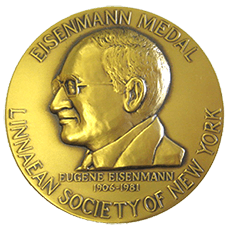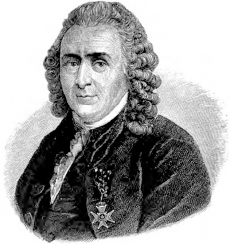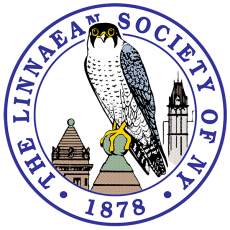The Mission Statement of the Linnaean Society of New York
The Linnaean Society of New York provides a forum for the sharing and advancement of science-based knowledge through a program of lectures and field trips. It fosters an appreciation of the natural world with a special emphasis on birds. Founded in 1878, the Society comprises dedicated amateurs and professionals interested in the study, preservation, and enjoyment of nature and the environment.
About the Society

Established by amateur naturalists in 1878, the Linnaean Society of New York has worked to foster learning about, and stewardship of, the natural world. Its original members included H.B. Bailey, E.P. Bicknell, Ernest Ingersoll, C. Hart Merriam, and John Burroughs. The Society focuses particularly on birds and their place in nature. It organizes regular birding field trips to various destinations in the New York City area and beyond, sponsors lectures from experts on birding and natural history topics, and offers a variety of birding resources, including a rare bird alert. It also takes a leadership role in addressing local conservation issues of concern to birders and natural history enthusiasts. Its aspirations are reflected in its highest award, the Eisenmann Medal, which is given each year to honor “excellence in ornithology and encouragement of the amateur.”
Field Trips, Lectures, and Publications
The Society’s field trips, led by expert members, focus on birds and also on plants, bats, and butterflies. More than 70 trips are offered each year, ranging from bird walks in Central Park, Jamaica Bay, and other New York City parks to excursions by car to diverse seasonal hotspots in the tri-state area. Field trips are open to non-members as guests as space permits.
Once a month, from September through May, except for the annual meeting in March, the Society presents a program on a natural history topic. Currently, the meetings are offered online, and are free and open to the public. The programs feature richly illustrated talks in layman’s language, by leading naturalists and scientists.
The Society’s publications include Proceedings, which contains financial and other reports, articles, and notes. Transactions, the Society’s research journal, presents lengthier research papers and compilations, such as the natural history of New York City’s parks and findings from the ongoing study of Terns on Great Gull Island. The publications are available online through this website.
Carl Linnaeus and the Society’s Name

The Society was formed on the hundredth anniversary of the death of Carl Linnaeus. Known as the “Father of Taxonomy,” Linnaeus, a Swedish naturalist and botanist, developed a systematic method to categorize plants and animals—known today as binomial nomenclature—that continues to provide the foundation for the work of biologists and of the generations of naturalists, both amateur and professional, who have comprised the Society.
It must be recognized that Linnaeus himself, as well as many of his contemporaries and later scientists, badly misused his system of classification, incorrectly applying it to humans in order to split mankind into “varieties” on the basis of skin color and physical traits. This erroneous classification has been used in subsequent centuries to deny basic principles of human dignity and equality, and to justify the oppression of large segments of the human race that continues even today, despite the fact that over time, science completely demolished Linnaeus’ racist theory.
The Society unreservedly condemns such beliefs and the unjust and cruel actions that have followed from them, and welcomes people of all backgrounds and identities as it actively seeks to diversify its membership.
You can read more about how Carl Linnaeus’ work shaped the basis of “scientific racism” on the Linnaean Society of London’s webpage here.
The Linnaean Society of New York Logo

The logo of the Society depicts a Peregrine Falcon perched atop a city tower and was designed for the Society by Richard Edes Harrison, a cartographer and amateur ornithologist. City buildings resemble the native cliff habitat of the peregrine, and today there are a number of nesting pairs throughout the city.
The Board of Directors wishes to thank Johanna Mitra for her editorial contributions to this page.

